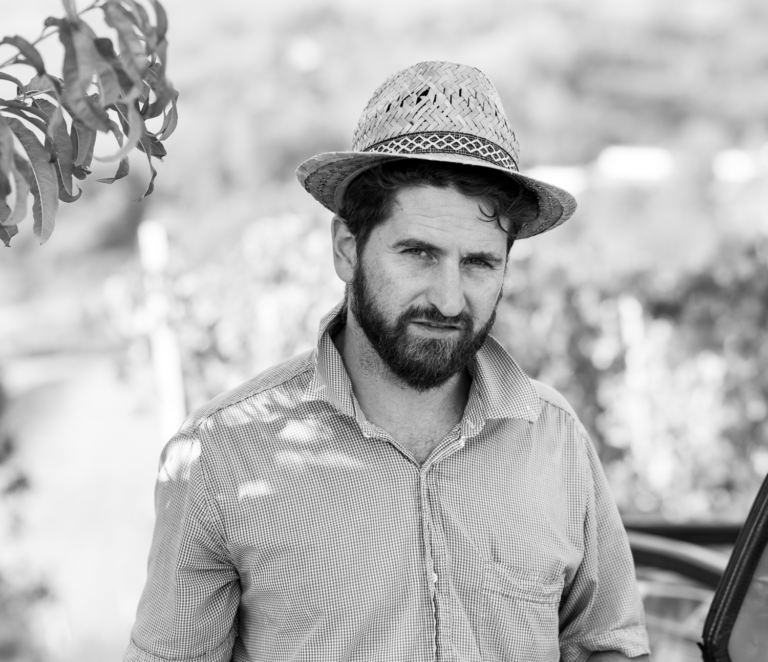
*Our friend Renato Vezza, of Priocca's Bricco Ernesto - likely the most vineyard-driven vigneron we have ever met, with a reputation to back it up - has been an important reference for us in better understanding vintages in Piedmont.
Piedmont Vintages - The Needle Move
This past summer, we participated in a vertical of Cascina Val Del Prete's Roero Bricco Medica (Nebbiolo), back to 2011 - the first vintage the wine was vinified and aged entirely in concrete.
We are not advocates of generalizing vintages, however, among many different factors telling the story of a growing season, the wines could be divided into two stylistic camps - 2011 through 2014, and 2016 through 2020 (we didn't have any 2015). Wines from the older vintages had aged gracefully and were still youthful.
The 2016 through 2020 group had high highs - especially the very different yet equally fine 2019 and 2020. The wines from this flight were a touch more generous and exotic in style, even if any individual wine could be described as classic and balanced, which they all were. Taking into account more youth and modest adjustments towards elegance that Nino Roagna has made in the cellar, there was a collective feeling that the wines were still more reflective of warmer years and shorter growing seasons.
The one seeming outlier in was the 2019 - more on that to come.
As a broad stroke, 2016 through 2020 were mostly growing seasons that favored ripeness, with 2017 being the start of drought conditions that have gripped Piedmont ever since. 2016 is often presented as a classic year, however, the wines are more generous and ripe than 2013 and 2019. The only positive component of drought conditions throughout these years is that the vines were subject to hydric stress at various times, which slowed down ripening. The best wines from 2017 and 2022 don't have very high alcohol levels due to this.
Back to 2019.
For us, 2019 was a reminder of the acidic backbone and truly strict structure that Nebbiolo has in "classic" vintages. However, if we zoom in, many wines do also have elements of a warmer year. The fine print is that 2019 was fairly hot and dry, much more than 2013, which this vintage is compared to. 2019 is a lesson in just how critical Fall weather is - the last month before harvest saw very cool nights, which seems to be the primary driver in the pronounced acidity and lower alcohols levels. Even so, many producers talked about how over-extraction was very easy in 2019. As such, maceration times were strikingly short for a "classic" year. This isn't meant to take away from 2019 - it's a vintage we love. However, it gives inquiring minds something to chew on.
Reflecting on 2019 in the context of the Cascina Val Del Prete vertical, it was an affirmation of what I think I knew but had not fully articulated before - the needle of what is collectively considered classic has shifted. Is this what classic looks like in the context of new climatic conditions that have persisted for more than 5 years, and does it make sense to recognize this new type of "neo-classic" vintage?
We do believe the pendulum can swing when least expected, however, it does seem like Piedmont is setup for more of the same. Renato Vezza from Bricco Ernesto explained how even with a cool and wet year similar to those prior to 2015, the wines will still not be fully reflective of it because there are cumulative effects of drought. It will take multiple normal years for water tables to become restored.
Logic dictates that old vines with deep roots fair well in drought, however, Renato and others explain that old-vines have limits too. Natural farming is becoming even more important as it does offer the best chance for grapes that remain balanced and with good acidity. Chiara Condello, Bricco Ernesto, and Valfaccenda have all converted to biodynamics within the last few years. All were organic but recognized the additional focus on vine and soil vitality that biodynamics brings.
Growers we work with - including Chiara Condello in Romagna (a 4 hour drive from Roero) - also talk about how they are experimenting with thicker canopies and more green surface during the growing season as a way to slow down ripening and to provide shade for bunches. Of course, this requires more work in the vineyard due to restricted air circulation, but for producers working at this level, that is not a problem. What is interesting is this is how Lano Gianluigi in Barbaresco has always farmed - Gianluigi explains how 80 years ago that is how everyone did it.
Ultimately, the rule that great producers always find a way to make great wine (in the vineyard), rings true.
For now, we respect just how many growers in Piedmont are able to make great wine given these conditions. While they adapt, we anxiously await for the next true "classic" vintage, by historical standards, to take shape.